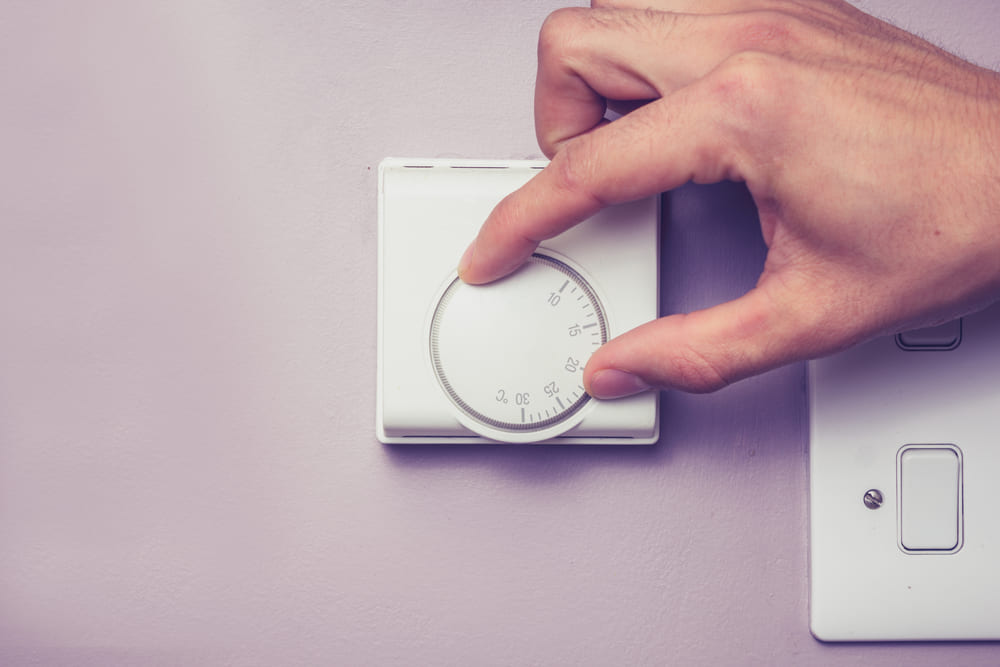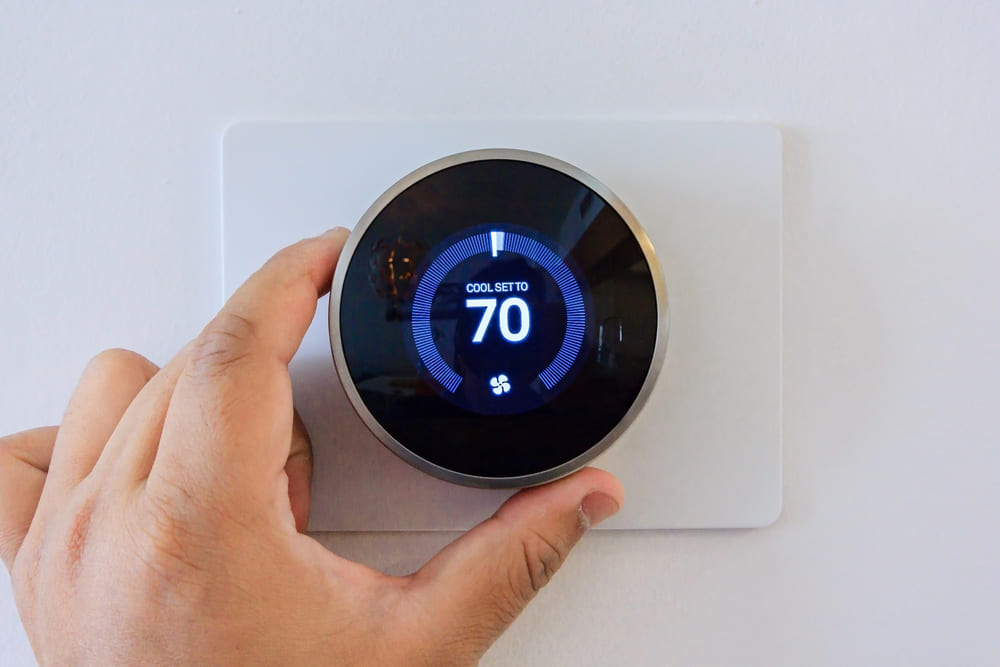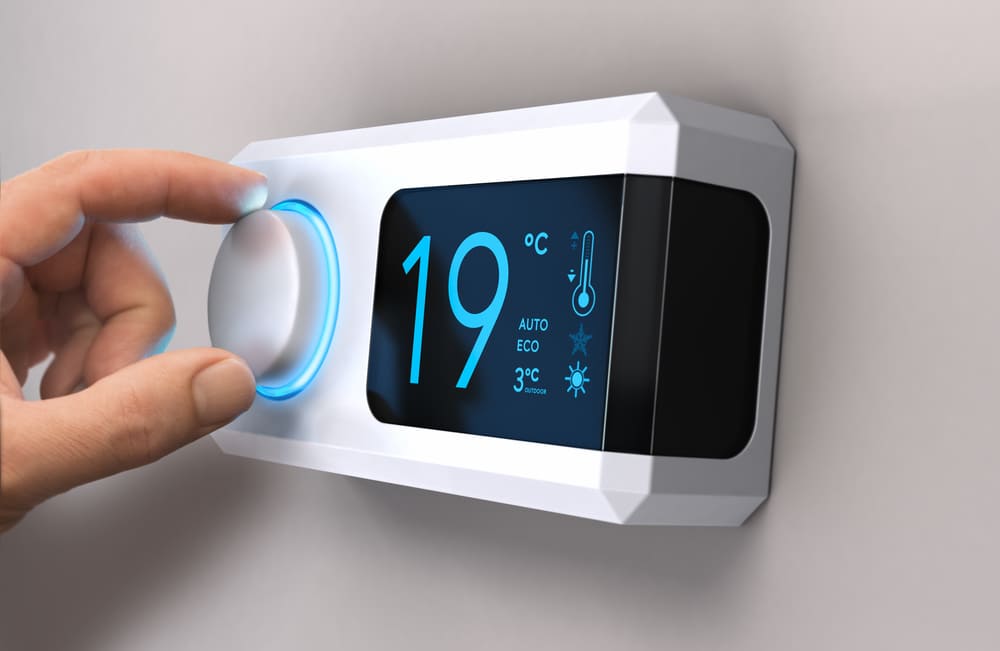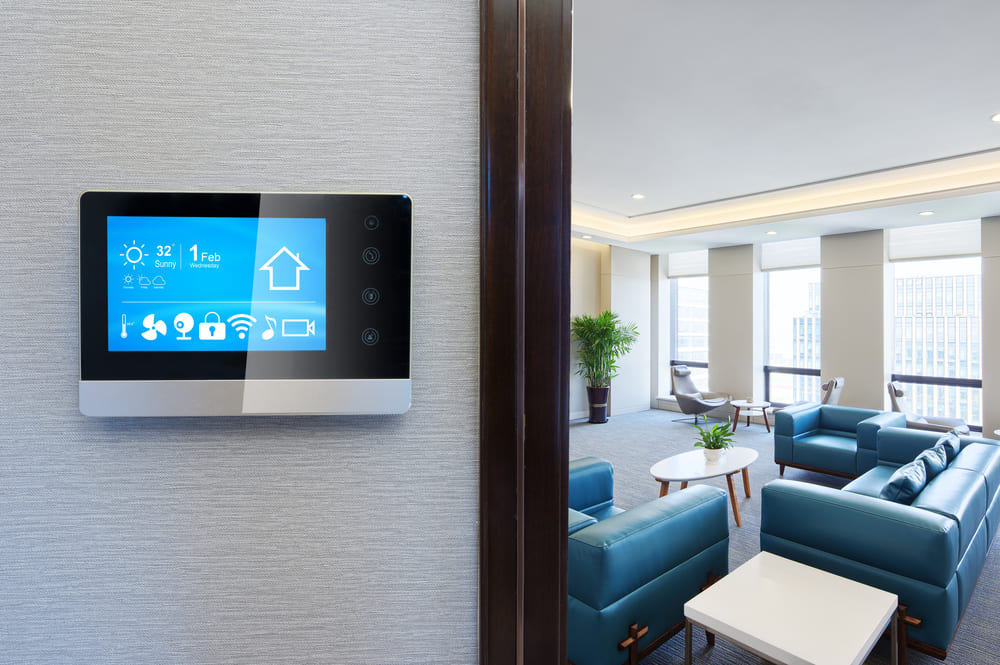Are Smart Thermostats Worth the Investment?
You’ve heard about “smart” thermostats and how they are revolutionizing homes around the world. But are they really worth it? Do they provide that many advantages over traditional thermostats?
And is it really worth spending the money and time replacing your current thermostats with smart ones?
We’re going to break it down for you.
How Do Thermostats Work?

First things first: how do thermostats even work?
Traditional thermostats have simple, scientific principles behind their functions. The device controls the heating and air-conditioning systems in your house by monitoring the surrounding temperatures and then turning the HVAC systems on and off accordingly. A thermostat is unexpectedly simple while containing some cool technology.
Thermostats made in the past two decades are nearly all digital, but traditional, non-digital thermostats can still be found in older homes. Most traditional thermostats have a mercury switch — a glass vial with a small amount of liquid mercury inside. The mercury conducts electricity and flows like water.
The glass vial contains three wires. One wire crosses the bottom of the vial, maintaining contact with the mercury. One wire makes contact on the left side of the vial and when the vial tilts to the left, the mercury hits it, making contact between this wire and the one at the bottom. The third wire makes contact on the right side of the vial, and when the vial tilts right, the mercury makes contact between this wire and the bottom wire.
These contacts are how your thermostat determines when to turn on the heat and when to turn on the cool air. In the late 90’s, traditional thermostats started being replaced with programmable thermostats.
Programmable Thermostats
The next step up the technological ladder is the programmable thermostat. These are an improvement over manual models as they automatically adjust the temperature in your house during the day. They have multiple programming options you can set depending on your preferences and schedule. For those who work from home, a daily program is the best. If you work a regular, 40-hour work week, the programmable thermostat can turn off the HVAC system while you work and turn it on before you get home.
Based on your geographic location and how regularly you run the HVAC system, a programmable thermostat could save you 15-30% on your energy costs each year. But what about…
Smart Thermostats

Why would you want to upgrade to a Smart Thermostat? It’s all about automation and learning.
Smart thermostats learn from your cooling and heating behaviors, let you control the climate at home remotely, can display energy consumption in real-time, and can even make adjustments to your system based on ambient conditions (humidity, for example). Compare this to all the manual adjusting and programming that must be done with standard thermostats.
Like the programmable thermostat, most smart thermostats can shut off the HVAC when you leave and start it again before you get home. It can also show you how long it takes to make adjustments so you can see how effective your climate control system really is. You can even manage smart thermostats from your phone.
Smart thermostats even offer statistical data about how your home climate is managed. You can access information about how long it takes to heat your house, what time of day you use the most energy, and it can even suggest ways to cut down your energy consumption. When you use a smart thermostat correctly, you can reap huge savings on gas and electric bills.
Cost Savings with Smart Thermostats
Since smart thermostats came on the market, all smart thermostat manufacturers are making savings claims, saying you’ll save anywhere from $10 a month to a yearly average savings of 23%.
How much you save when using a smart thermostat depends on lots of factors, according to MB Grant from KnowledgeBase:
- Your current energy usage. Do you leave the heat on constant all winter or do you dial it down in the evenings and when you leave for work?
- The cost of utilities in your region. They probably get more expensive every year
- Seasonal variations. Think “mildest winter in 20 years” and “coldest winter on record”
- Climate. If you live in a temperate climate your savings will be smaller than, say, those of someone living in New England and coping with both frigid winters and scorching summers
- Your home and HVAC system itself. Your insulation and HVAC maintenance habits (keep those filters clean) make a difference, too
If you use a lot of energy because you run a consistent temperature year-round, you may see a decrease in your energy bills by letting a smart thermostat manage your system. While you can’t control the cost of utilities in your area, some utility companies will help pay for an upgrade to the thermostat.
The potential for savings also depends on the climate you live in. In the Midwest, for example, heating starts in October and lasts until April or May. June through September are the months for air conditioning. However, in the Pacific Northwest, heating a home is considerably cheaper and you don’t even need AC most of the time.
You would also need to consider the size and condition of your home. Big houses are more costly to heat and cool. The level of insulation you have will also affect how often the temperature of the home will need to adjust for optimal comfort.

There’s a lot to think about when deciding whether to install a smart thermostat. This includes which smart thermostat control you choose, whether or not you take advantage of all the features offered, how well insulated your home is, and what type of heating system you have installed.
For people with a busy lifestyle, being able to program their thermostat is a win. When you have a regular routine, some of the smart heating thermostats will learn your routine and keep your home comfortable year-round.
When you stay in the same house for several years, you can recover the cost of installation through heating and cooling savings. According to the researchers at TechWalls.com, conditions that affect savings from a smart thermostat are as follows:
Proper Temperature Settings
Using thermostats properly can save you at least a 10% each year on your energy costs. Implementing temperature changes for different times of the day will give you optimum results and prevent unnecessary energy usage.
This is where a smart thermostat comes in handy. As Chesky Ron notes:
“Here you can tell the thermostat to shut off when you are leaving and tell the time by which you want it to work again that will make your home cozy when you return. Every thermostat takes some minimum amount of time to change to the set temperature, which it will tell you beforehand so that you can set the temperature and time accordingly.”
Unpredictable Seasonal Variations
Year to year seasonal variation will affect your cost savings. You could move from the coldest year on record to the warmest and not see significant savings. “Since even a smart thermostat works well on proper assumptions, if your area has unpredictable seasonal changes, it may not be able to generate much savings” (TechWalls.com).
The Size of Your Home
The size of your home does make a difference. When you have a large home, heating and cooling will be more expensive than energy costs of a small house. So, savings for people with large houses will be less compared to those with smaller houses when using smart thermostats.
Types of Smart Thermostats
Like anything else, smart thermostats are available in various designs and models. Generally speaking, there are two categories: a smart thermostat that learns from your behavior and adjusts heating and cooling and a thermostat that offers internet connectivity and remote programming.
Smart thermostats are not cheap. Prices vary from $200 to $500 depending on the model, and installation costs are also expensive. So, it may take some time to recoup the investment through cost savings.
For the tech savvy, smart thermostats offer some alluring features, like control over scheduling, they are easy to use, and they can send alerts and temperature updates to your smartphone.
Smart thermostats take out the hassle of manually changing the temperature in your house and gives you both comfort and energy efficiency.
What Smart Thermostats Are Available Now?

While there are numerous ones available, according to cnet.com, the three best smart thermostats on the market today include the following:
- The Ecobee4 has a responsive display, remote sensor, and various smart tech integrations, including an Amazon Alexa speaker. This model runs around $200.
- The Nest Thermostat E is almost as smart as Nest’s first model, but costs less at $175.
- The Lux TX500U (under $30), is programmable and has a remarkably intuitive interface.
You can continue to expect more to come out as the market continues to grow for this product.
Conclusion
In our energy conscious society, Smart Thermostats are one way to reduce energy consumption and lower your utility costs. Tech savvy homeowners have the option of programming their HVAC for optimal efficiency and comfort.
The climate in your home is the greatest factor in whether or not you are comfortable from day to day. Smart Thermostats give you a great option for maintaining a comfortable environment with very little effort.
 Castings & Forgings
Castings & Forgings
 Bulk Material Handling
Bulk Material Handling
 Electrical & Electronic Components
Electrical & Electronic Components
 Flow Instrumentation
Flow Instrumentation
 Hardware
Hardware
 Material Handling Equipment
Material Handling Equipment
 Metal Cutting Services
Metal Cutting Services
 Metal Forming Services
Metal Forming Services
 Metal Suppliers
Metal Suppliers
 Motion Control Products
Motion Control Products
 Plant & Facility Equipment
Plant & Facility Equipment
 Plant & Facility Supplies
Plant & Facility Supplies
 Plastic Molding Processes
Plastic Molding Processes
 Pumps & Valves
Pumps & Valves
 Recycling Equipment
Recycling Equipment
 Rubber Products & Services
Rubber Products & Services